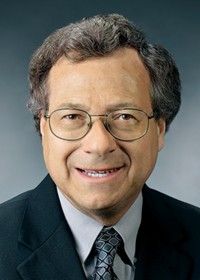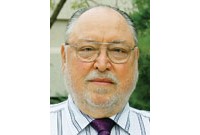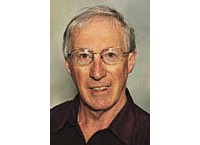Advertisement
Grab your lab coat. Let's get started
Welcome!
Welcome!
Create an account below to get 6 C&EN articles per month, receive newsletters and more - all free.
It seems this is your first time logging in online. Please enter the following information to continue.
As an ACS member you automatically get access to this site. All we need is few more details to create your reading experience.
Not you? Sign in with a different account.
Not you? Sign in with a different account.
ERROR 1
ERROR 1
ERROR 2
ERROR 2
ERROR 2
ERROR 2
ERROR 2
Password and Confirm password must match.
If you have an ACS member number, please enter it here so we can link this account to your membership. (optional)
ERROR 2
ACS values your privacy. By submitting your information, you are gaining access to C&EN and subscribing to our weekly newsletter. We use the information you provide to make your reading experience better, and we will never sell your data to third party members.
Education
George C. Pimentel Award In Chemical Education
by Rick Mullin
January 27, 2014
| A version of this story appeared in
Volume 92, Issue 4
Sponsored by Cengage Learning and friends and colleagues of George and Jeanne Pimentel
Thomas J. Greenbowe received his Ph.D. in chemistry education in 1983 from Purdue University, a pioneer in doctoral programs for training chemistry education researchers. He continued his study in the field, focusing on how chemistry is presented to undergraduate freshmen and identifying a big need for improvement.
“What interested me was the difficulty that I observed students having trying to learn chemistry and their frustration with a straight lecture presentation,” says Greenbowe, who has taught in the chemistry department for almost 25 years at Iowa State University, spending sabbaticals at the University of Arizona and, currently, at the University of Oregon. The standard method of lecturing and teaching in the lab simply isn’t working for many introductory-level college students, he says.
Greenbowe, 63, says he looked to other educators for guidance. “I attended a lot of workshops and a lot of ACS national meetings,” he says. “I interacted with chemistry educators doing innovative work and was able to develop with colleagues a style that embodies the guided-inquiry approach.”
As opposed to a strict didactic teaching method, guided inquiry is a discovery-based approach in which students begin an exploration in the laboratory, in the library, or online with a question. They gather data and discover a pattern. The instructor introduces the concepts pertinent to the pattern in the data, and the student proceeds to apply the concept in other contexts.
“It’s a learning cycle,” says Greenbowe. “It’s not the only way students will learn, but it is a way that most students will learn effectively.” Greenbowe has worked to give guided-inquiry structure for introductory college chemistry by incorporating the Science Writing Heuristic (SWH), a writing-based approach for teaching chemistry at the middle school level developed by professors at Iowa State University and the University of Georgia. SWH, in turn, is based on Process Oriented Guided Inquiry Learning (POGIL), a pedagogical method of teaching process skills first developed for teaching chemistry at Franklin & Marshall College and Stony Brook University, SUNY.
SWH, Greenbowe says, frees students from the standard laboratory notebook formula of logging the title, purpose, procedure, data, and conclusion when doing an experiment. Instead, students begin with a question—a question of the day, by the POGIL approach—and write about the work they are doing to generate further questions that need to be answered.
Greenbowe—along with John Gelder, a chemistry professor at Oklahoma State University, and Michael R. Abraham, a chemistry professor at the University of Oklahoma—has created a computerized visualization program for guided-inquiry tutorials that aids students in conceptualizing relationships between variables in an experiment. “It allows students to see what is happening at the particulate level, the atoms and molecules,” he says.
Greenbowe has succeeded in gaining $3.5 million in funding to develop computer-based animation programs from various agencies, including the National Science Foundation. Greenbowe, Gelder, and Abraham are currently working with Pearson Education on a new generation of computer simulations for general chemistry. Greenbowe has also published extensively in journals including the Journal of Chemical Education, the International Journal of Science Education, and the Journal of College Science Teaching.
Greenbowe will present the award address before the Division of Chemical Education.






Join the conversation
Contact the reporter
Submit a Letter to the Editor for publication
Engage with us on Twitter